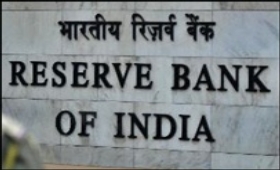|
|
|

|
Jalan panel report suggests RBI surplus transfer over 3-5 years
|
|

|
|
| Top Stories |
 |
|
|
|
SME Times News Bureau | 14 Aug, 2019
The Bimal Jalan committee tasked to recommend the formula to be adopted
for transfer of the RBI's surplus to the government has finalised its
report, official sources said here on Wednesday.
According to the
sources, the report of the panel examining the ideal size of capital
reserves that the central bank should hold earlier contained a dissent
note from former Finance Secretary Subhash Chandra Garg who has since
been moved to the Power Ministry. The resulting vacancy was filled by
the new Finance Secretary Rajiv Kumar in order to finalise the report.
"The
report is more or less finalised. There will not be another meeting. We
have discussed everything and now it's the final report. The
recommendation of transferring the surplus over 3-5 years remains the
same. In the next few days, the report will be submitted to the RBI
Governor", an official source said after the panel meeting.
The source declined to specify on the details of the report or the quantum of reserves to be transferred to the government.
According to the sources, the recommendations have been "more or less" finalised and there will not be another meeting.
"It
would be difficult to tell what is the exact amount of transfer or the
calculation. Transfer would be in phased manner as is the practice," one
source said.
The report would be submitted to the Reserve Bank of India (RBI) in the next few days, he added.
According
to the official sources, there was no longer any dissent in the panel.
The six-member committee under former RBI Governor Bimal Jalan was
appointed in December 2018 to review the RBI's economic capital
framework (ECF).
The Finance Ministry wanted the central bank to
follow global best practices and transfer more surplus to the
government and not overcapitalise itself by sitting on a huge amount of
surplus currently estimated to be around Rs 9 lakh crore. This figure
has, however, not been disclosed officially by the government or the
RBI.
The surplus capital transfer would help the government meet its fiscal deficit target and undertake capital expenditure.
The
government has set a fiscal deficit target for the current financial
year of 3.3 per cent of the GDP, which was revised downward from 3.4 per
cent pegged in the Union Budget for 2019-20.
The government is
expecting Rs 90,000 crore dividend from the RBI in the current financial
year as against Rs 68,000 crore received last fiscal.
The other
key members of the committee include RBI Deputy Governor N.S.
Vishwanathan, former of the RBI Deputy Governor Rakesh Mohan, Finance
Secretary Rajiv Kumar and two RBI central board members -- Bharat Doshi
and Sudhir Mankad.
The government had been at loggerheads with
the previous RBI Governor Urjit Patel over the Rs 9 lakh crore central
bank surplus, leading to the latter's abrupt resignation last year. The
Finance Ministry was of the view that the surplus buffer of 28 per cent
of gross assets maintained by the RBI is well above the global norm of
around 14 per cent.
Following this, the RBI board in its meeting on November 19, 2018, decided to constitute a panel to examine ECF.
In
the past, the issue of the ideal size of the RBI reserves was examined
by three committees headed respectively by -- V. Subrahmanyam in 1997,
Usha Thorat in 2004 and Y.H. Malegam in 2013.
While the
Subrahmanyam panel recommended building a 12 per cent contingency
reserve, the Thorat panel suggested it should be maintained at a higher
level of 18 per cent of the total assets of the central bank.
The
RBI board did not accept the suggestions of the Thorat committee and
decided to go with the recommendation of the Subrahmanyam committee.
The
Malegam panel said the RBI should transfer an adequate amount of its
profit to the contingency reserves annually but did not suggest any
particular sum.
|
|
|
| |
|
|
|
|
|
|
|
|
|
|
|
|
|
|
| |
| Customs Exchange Rates |
| Currency |
Import |
Export |
US Dollar
|
₹91.25
|
₹89.55 |
UK Pound
|
₹122.85
|
₹118.85 |
Euro
|
₹107.95
|
₹104.3 |
| Japanese
Yen |
₹59 |
₹57.1 |
| As on 29 Dec, 2025 |
|
|
| Daily Poll |
 |
 |
| What is your biggest hurdle to scaling right now? |
|
|
|
|
|
| Commented Stories |
 |
|
|
|
|
|
| |
|